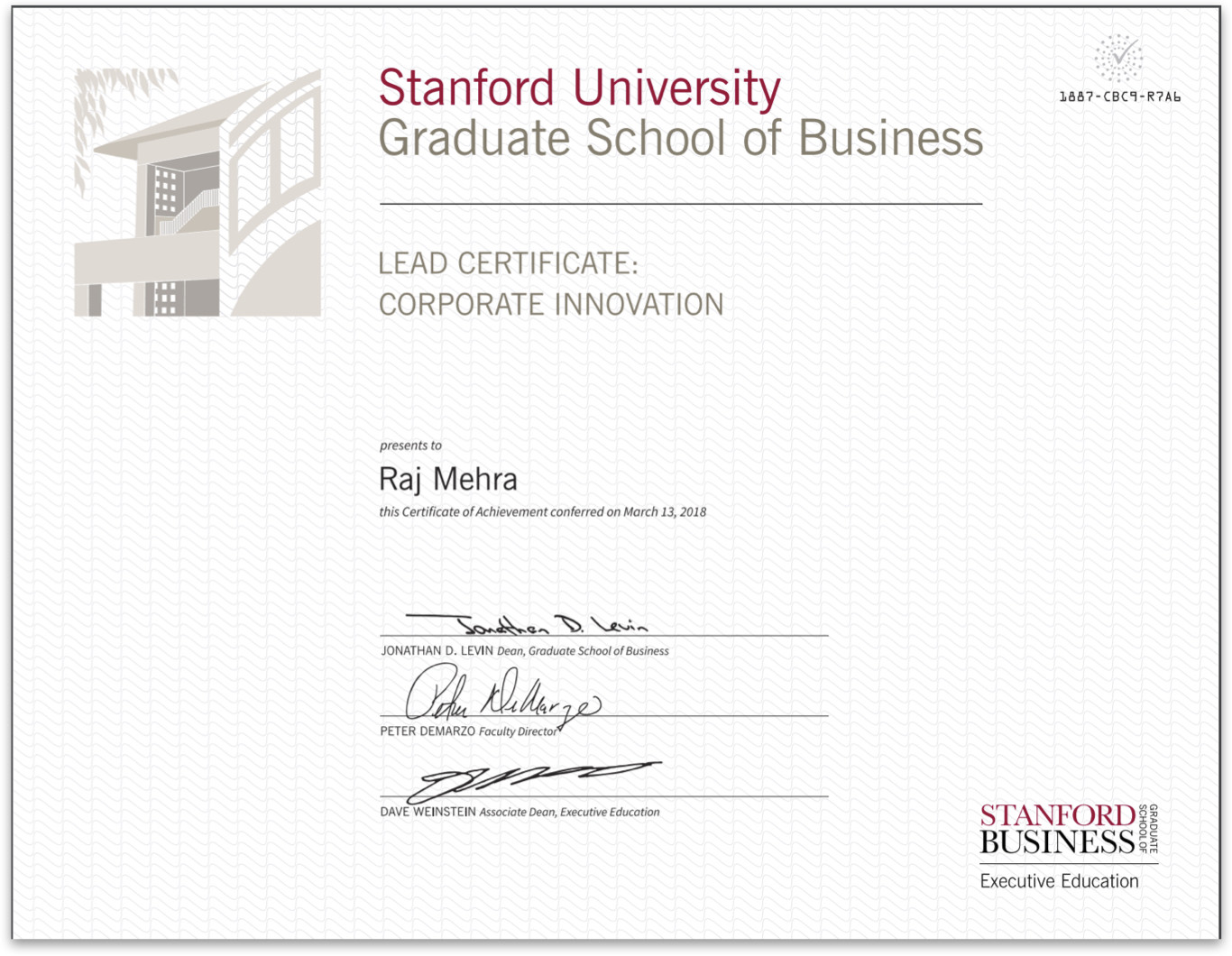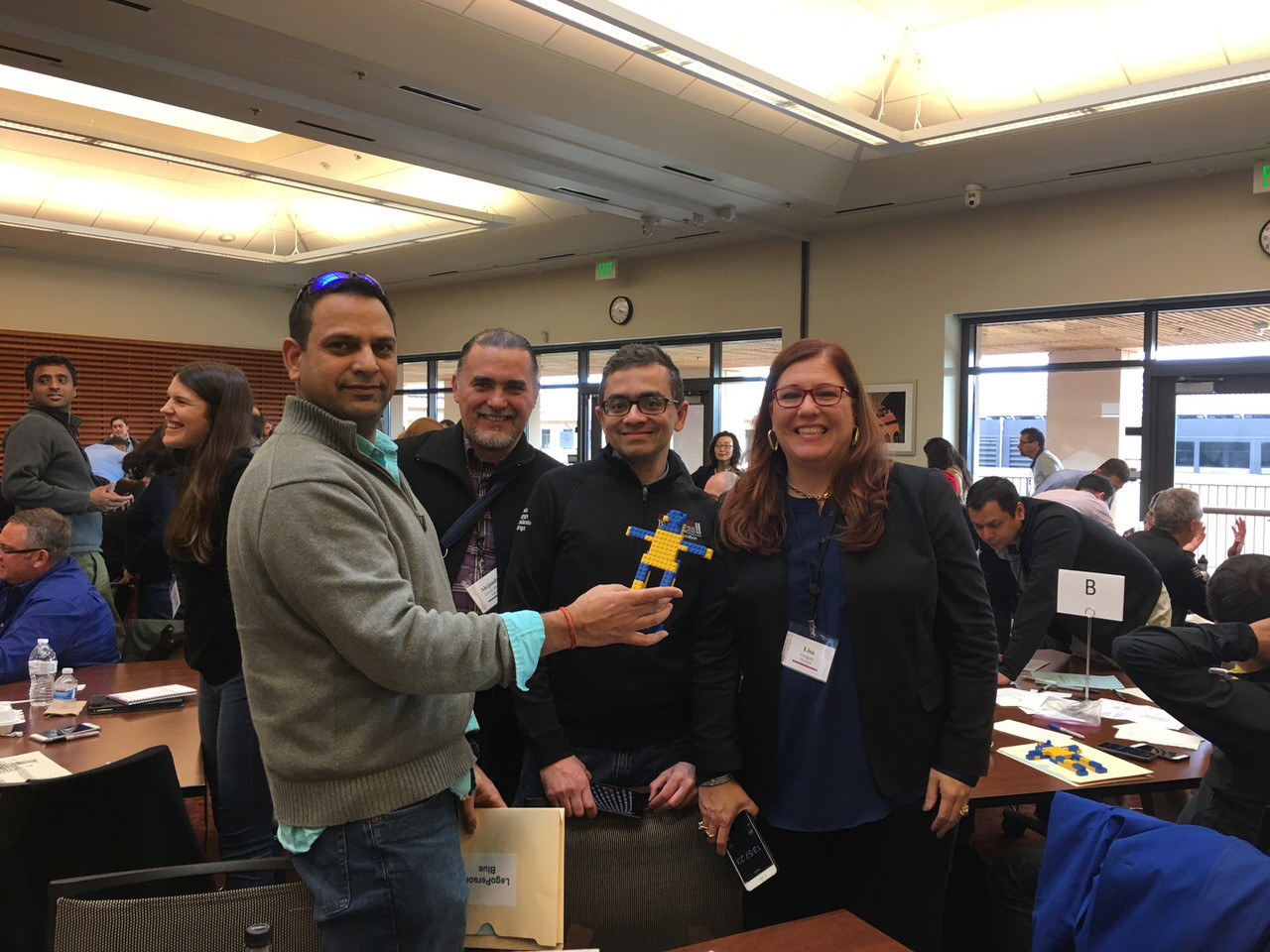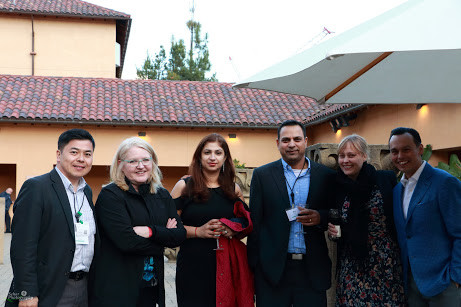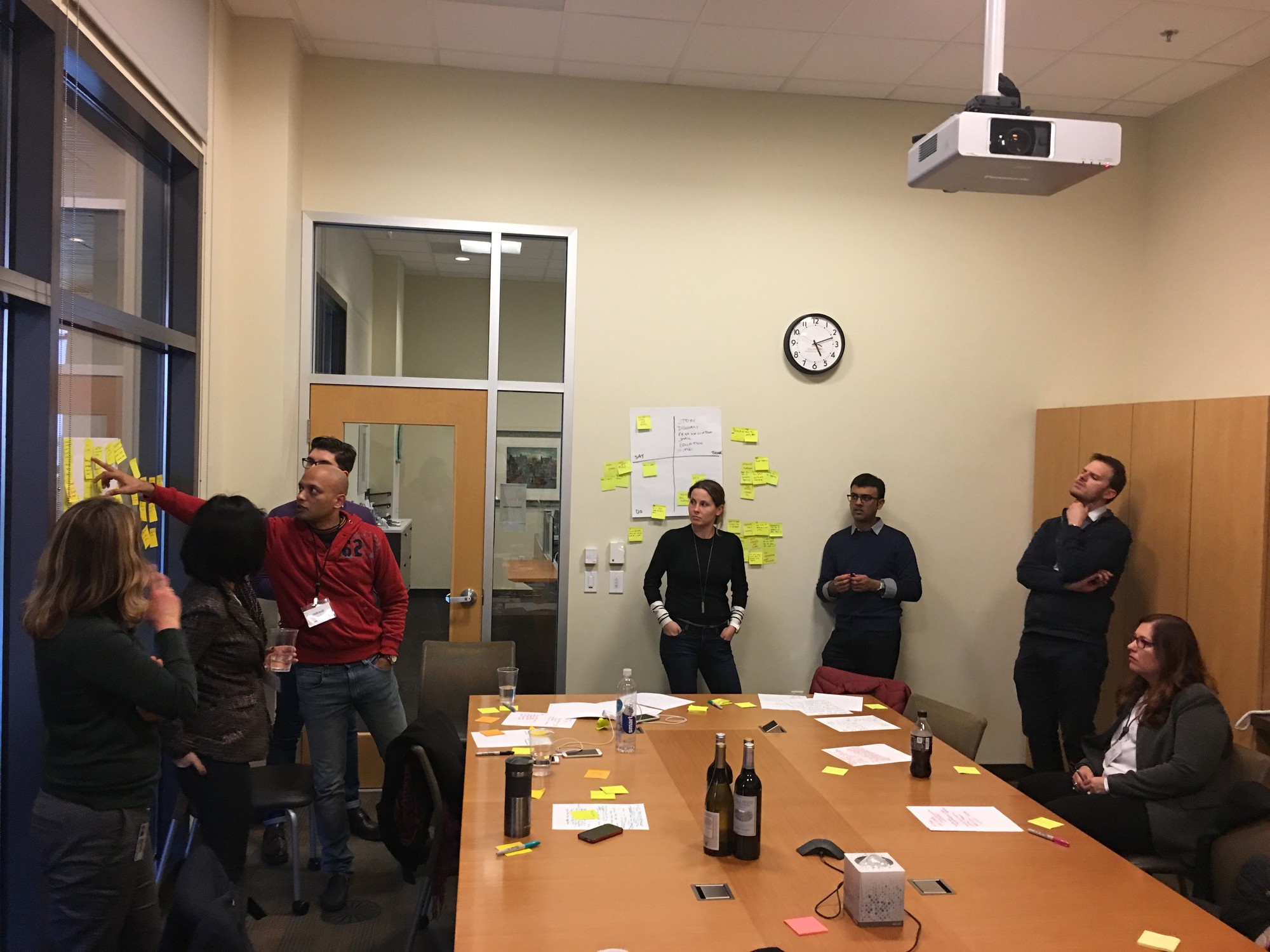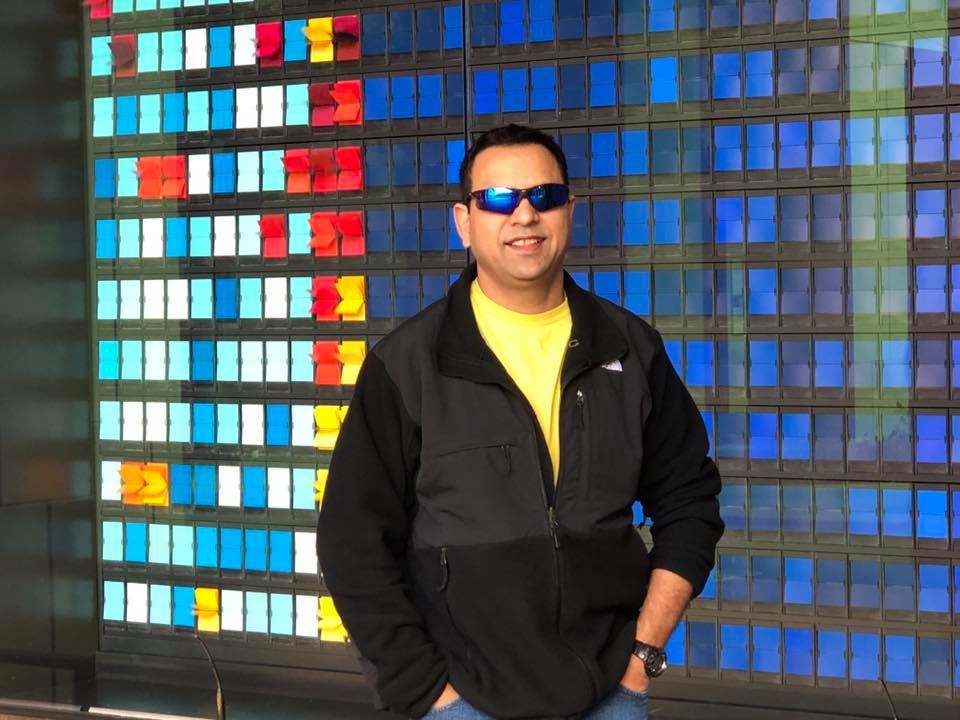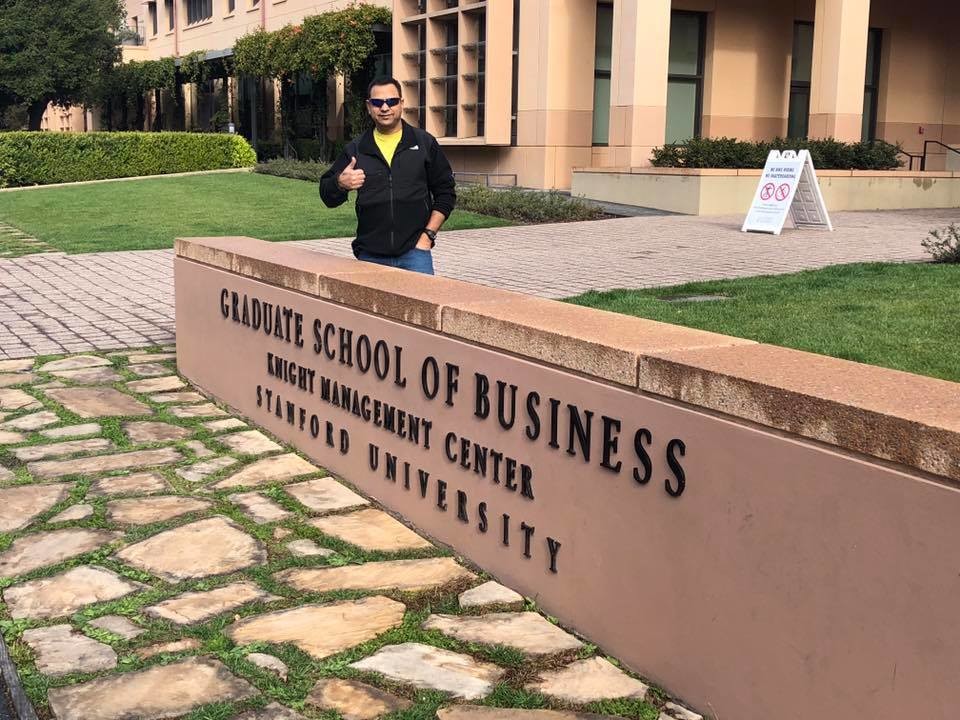Each of us, as leaders, at some point in our careers have had the desire to rejuvenate, rekindle or reinvent an important aspect about how we want to shape and influence our future to either suit the demands of work or personal interests/needs. I experienced the same thought process, and given my
skill set, credentials, progression and experience
in the field of software engineering are heavily focused in the Healthcare Information Technology industry, I was compelled to get my veins filled with exposure from other industries on how they are operating and innovating to help prepare my transition into the next era of leadership. I also wanted to get a first hand perspective working and learning with some of the leaders from companies across the world, and more importantly understand how some of the elite management institutions are helping in nurturing their respective leaders.
Why?
To grow as an effective leader who matters
and,
To be able to coach and guide my teams using the best learning/experience.
Stanford LEAD: Corporate Innovation, stood out as the complete program that can help without having to give up my balance of work/personal life, or requiring additional travel.
LEAD (Learn, Engage, Apply and Disrupt) program is a year long cohort based, that includes four semesters through which participants can take two courses per semester including three core fundamentals and five electives. Engaging with my cohorts in the LEAD program from all over the world was extremely valuable for me. All the courses are taught by the Stanford GSB faculty and the engagements with the faculty was invaluable at every opportunity we got.
The program included
a lot of hands-on with both individual and team assignments, discussions with the cohorts, faculty, coaches and digging in and analyzing the data from your assigned projects, pain points, etc…
as well learning how to align and understand the point of view of your cohorts that are, although separated by the time zones across the geographical boundaries, retain no bounds of discussions.
Quarter One The program started its first quarter with the two fundamental courses of - Financing Innovation: The Creation of Value and Critical Analytical Thinking. The first few interactions with the professors/course facilitators gave us a glimpse of the level of engagement in the program.
Key takeaways were:
grasping the financial terminology and what it means financially to get a business case sponsored within a company. Being able to understand how hundreds, if not thousands, of strategic/market/technical projects/asks compete and
what is the impact of each project on the company’s NPR and who gets the funding to run.
Additionally, we were also exposed to some of the critical analytical thinking skills that one must possess as you begin setting up new projects or businesses. Primarily, how to evaluate and tell
if a business is viable both financially and operationally. AirBnB’s use case was a great example that gave us a lot of ideas around what it takes to setup and operate a business from the ground up.
In my mind all managers and executives should possess critical analytical thinking skills in their professional career.
Quarter Two Second quarter included one of the remaining fundamental course,”Strategic Leadership” and my favorite elective, “The Innovation Process: Design Thinking.”
Key takeaway for me was deducing the elements of strategy
PARC ( People, Architectures, Routines and Culture) how they can be aligned with the logic of your company’s strategy, how you can identify possible competency traps faced in the company, and how they can potentially be corrected. The process to pull this kind of data out and review it collectively across the cohorts was extremely valuable to us. We also attained invaluable experiences around how to construct a valid argument for each proposed initiative across the company, so that as a company we are working on the right strategic initiatives.
My personal favorite was to be the part of “The Innovation Process: Design Thinking” team with cohorts from San Francisco, New York, Milan and Netherlands. As a team we worked on our innovation challenge design idea prototype and went through the:
User Journey Map and the Empathy Map
where we identified the key assumptions and observations and went through interviewing the user/stakeholders to validate our assumptions, and eventually design the prototype for our innovation idea.
Quarter Three Third quarter continued to develop the design thinking and story telling through the courses: “The Innovation Process: Testing and Implementation” and “The Innovation Playbook: Designing Stories for Impact”.
A major takeaway was continuing on our prototype design and elevating it to the next level and create a prototype, so that we could share it with our users and gain feedback. We used the
Business Model Canvas and Market Sizing Estimates and decided that we wanted to persevere further with our idea. We carried out several experiments in the process to further test our assumptions, and finally created an operation plan to pitch in order to get the funding. Our idea has received great feedback from the cohort leaders and is currently in a hold state, pending participation/commitments from the team.
Another exciting experience to be a part of was, “The Innovation Playbook: Designing Stories for Impact” course. This provided the understanding around
how to build your story. Be it your company story, user story, innovation story or your own leadership story and how to tell it in a powerful and impactful manner! Personally, the best moment of my leadership story was its selection, and also how sharing the story with the rest of my cohorts instilled a lot of confidence in me as a “story teller.”
Quarter Four The fourth and last quarter involved two of the best courses in the LEAD program - “Building Power to Lead” as well as, “Customer Experience Design: A Neuroscience Perspective.” For someone who is wanting to grow the leadership skills to be more powerful must not miss the, “Building Power to Lead” course. The course is taught by Professor Jeffrey Pfeffer and is based off of his book, “Power: Why Some People Have It and Others Don’t.”
One of the primary takeaways from “Building Power to Lead” course, and the Power Session - “The Secret Language We Speak All The Time” -by GSB Business Lecturer Richard Cox during the Me2We conference, was learning the art of
” speaking and acting with power”
While Customer Experience Design Neuroscience gave us a lot of freedom to design any challenge we liked using the neuroscience principals, Doing Power has helped me build
“power map”, identify and create “power goals”, define success criteria, and the action plan for each goal and thus track the progress on a continuous basis on how to be a “ leader who matters”. Best part of this was to gain the insight and validation from your personal assigned coach who can help ensure that your goals are realistic and that you continue to progress towards your goals on a weekly basis.
There is never a good time to sit back, relax, and enjoy the power
you MUST continuously step out of your comfort zone.
Power to lead requires
progressive and aggressive goals.
Stay connected with your professional network as it
help creates the networking, and provides insight on what’s going on outside your company and in the industry as a whole. Know the individuals who are key to your progression to power and ensure
there is a CONSTANT communication with them.
Learn and practice
how to create resources out of nothing…
Make sure you always
speak and act with power.
Its extremely important to not have enemies and more importantly,
learn how to turn your enemies into your allies. As noted by “Geoff Colvin” and something I firmly believe in:
“Talent is overrated”
and
deliberate practice is the key!
“Me2We” The program concluded at the Stanford GSB campus with a week long insightful, learning and interactive working conference known as Me2We. Attended by cohorts, course facilitators and the GSB faculty, Me2We is organized by the volunteer committee and includes: power sessions, workshops with GSB professors, external speakers, guest panel discussions, celebration lunches, ample amounts of fun and on-site visits to some of the best Silicon Valley fast-moving companies including Google, Facebook, Intel, Lyft, Adobe, GE, PayPal, and many more corporations filled with leadership presentations/talks and stories!
As the leader, we’re all faced with continuous challenges that can either slow down, pause or at times even bring a halt to the engineering progress. Leader’s everyday challenge each other to create an environment that helps “create and progress efficiencies & qualities in innovation” and that too with sustained momentum. The key to these challenges often lies in turning the disruptions into opportunities, which must be reviewed with both cost-benefit and feasibility perspectives. As a leader of an organization where we constantly produce leading-edge technologies to help drive the healthcare interoperability, I am always on the lookout for ways to improve my team’s efficiencies and prevent conflict. In my mind, it’s more than a collection of tools, techniques or methodologies that are required to maintain efficiencies. With LEAD, I feel better equipped to deal with such challenges and have already started applying what I’ve learned and seeing the benefits. From such experiences, I’m happy to be a LEADer and Stanford Alumni Association Affiliate!
